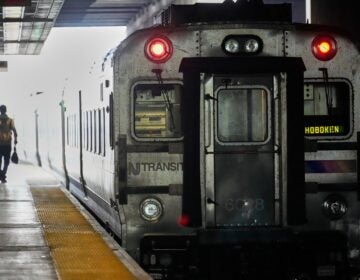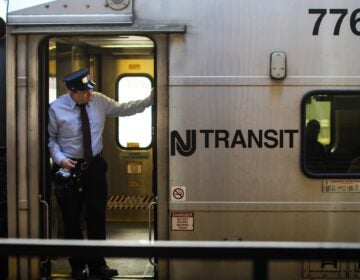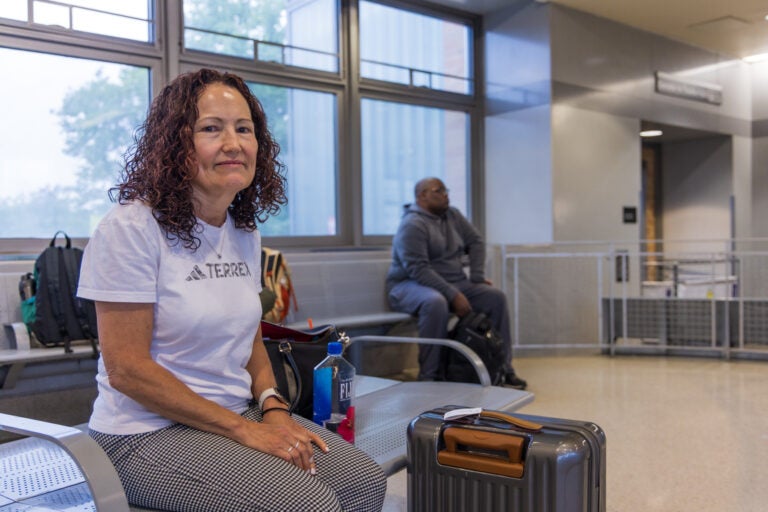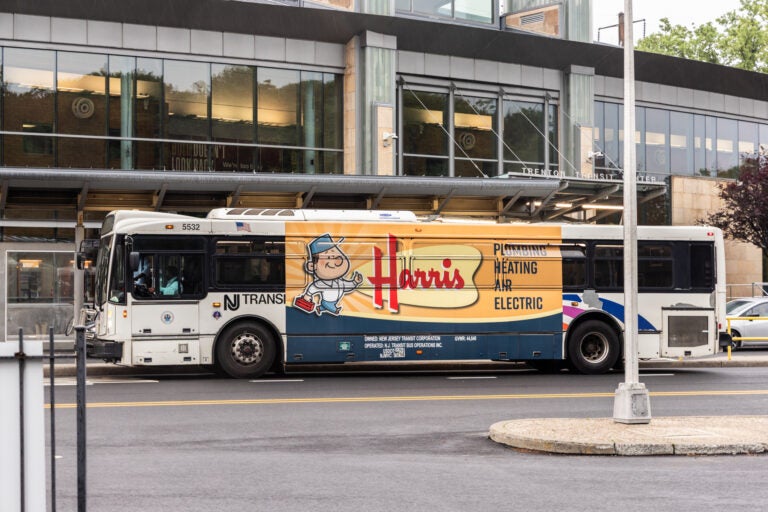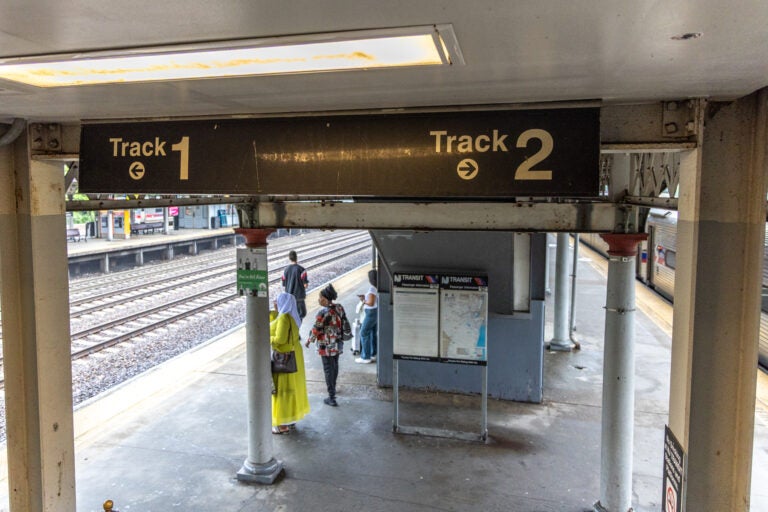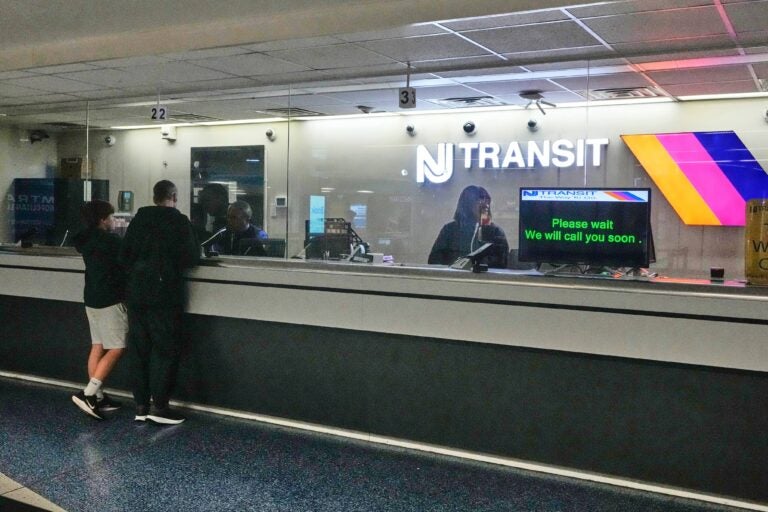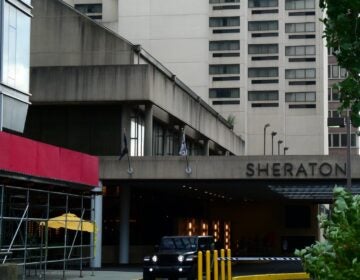NJ Transit strike: Here’s what you need to know
Residents of South and Central New Jersey and Pennsylvania are scrambling for travel options after NJ Transit engineers walked off the job.
From Camden and Cherry Hill to Trenton and the Jersey Shore, what about life in New Jersey do you want WHYY News to cover? Let us know.
NJ Transit train engineers walked off the job at 12:01 a.m. Friday after talks between the agency and government officials halted. The agency immediately suspended all rail service, and hours later, about 100,000 train travelers were left scrambling, trying to get to work and to other destinations.
Commuters frustrated over NJ Transit strike
Lynda Collins and her husband Dave, from Yardley, Pennsylvania, had a date night scheduled in New York City.
“I found out about this [a possible strike] last week and I said ‘Uh-oh, we have plans to go to a play, I better look at Amtrak because I don’t want to drive,’” she said.
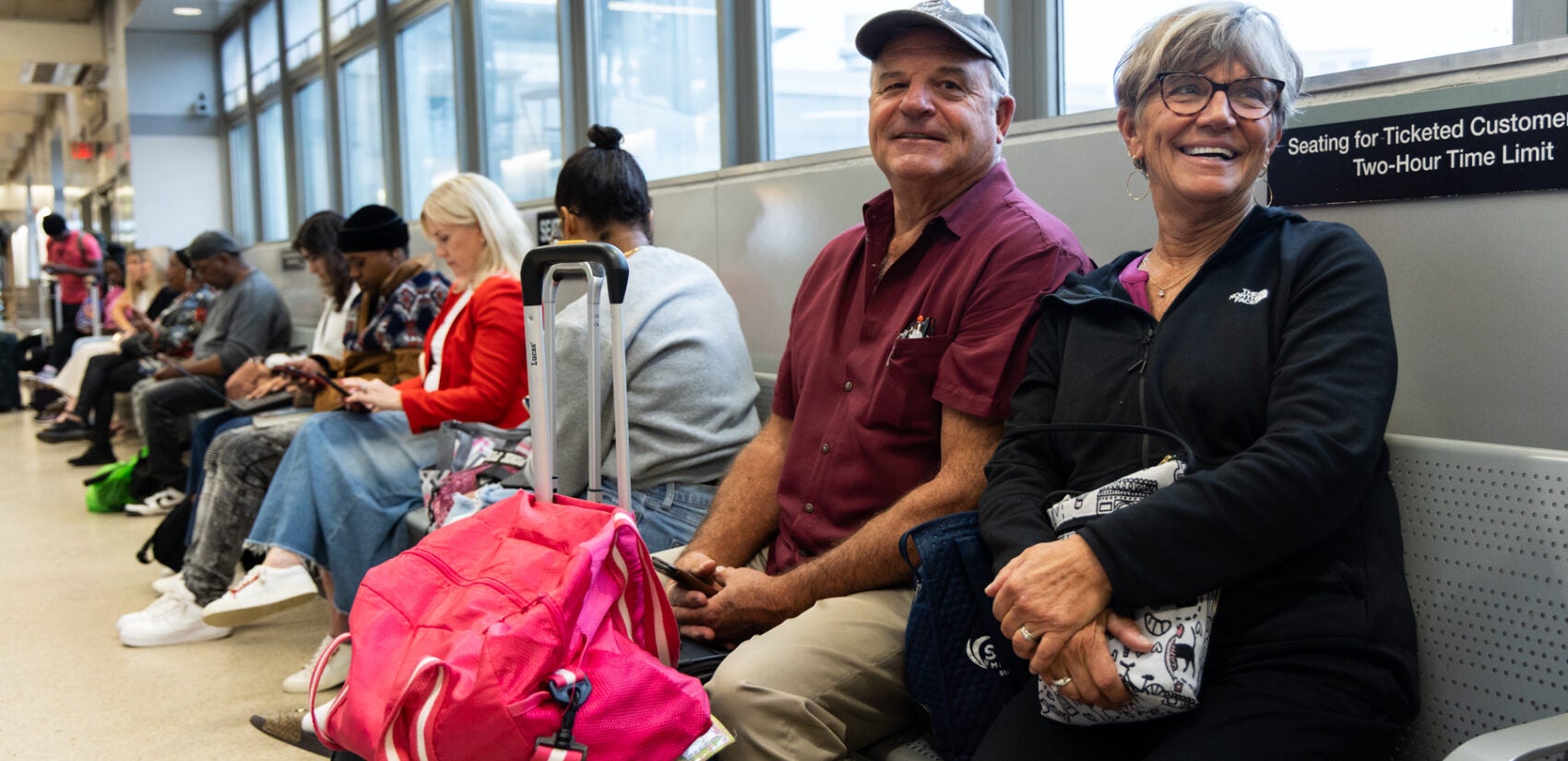
She said normally they would have taken a Northeast Corridor train, and she felt more than frustrated.
“I can’t say it, it’s a cluster-yeah, it disrupts everything,” she said.
She said the strike will make travel “horrible” for anybody who’s trying to get into New York City.
Collins made her Amtrak reservation a week ago, and said she’s glad she did because the prices shot up.
Like Collins, many others from South and Central Jersey, and Pennsylvania headed to the Trenton train station to catch an Amtrak train north.
Alexis Henry was in New Jersey visiting her mother at a senior living complex. She had planned to take NJ Transit back to her home in New York on Friday, but with the trains not running, she took an Uber to the Trenton Train Station and was waiting to board an Amtrak train.
She said she had not been aware about the strike until Friday morning.
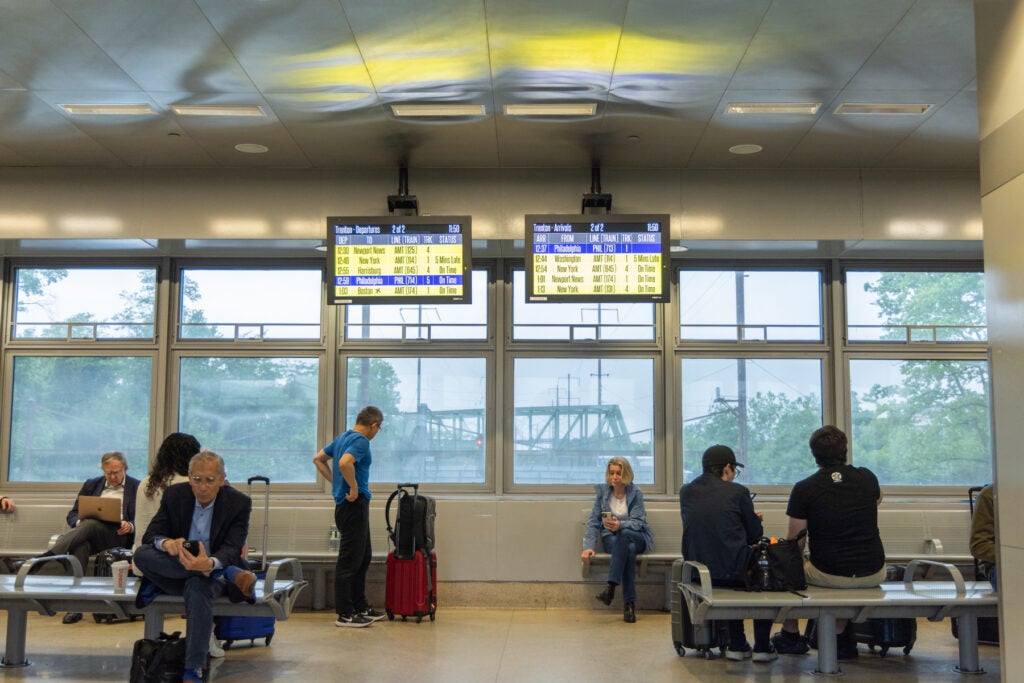
“It stops everything so yeah, it’s a huge inconvenience,” she said.
Henry said her Amtrak ticket was $118.00, a lot more than the $18 she would have paid for an NJ Transit ticket.
“I had to do it,” she said, “I need to get home.”

On Friday morning, Gov. Phil Murphy joined NJ Transit CEO Kris Kolluri at the Aberdeen-Matawan Station for a presser and addressed commuters’ woes.
“It is unfortunate that locomotive engineers have opted to disrupt the lives of 350,000 NJ Transit riders rather than continue working through ongoing negotiations,” Murphy said. “Nevertheless, we are enacting contingency plans and ask all New Jerseyans to be patient as we adjust during this challenging time.”
Why is the NJ Transit union striking?
The main dispute remains about compensation. The Brotherhood of Locomotive Engineers and Trainmen has demanded a pay increase matching the salaries of the Long Island Railroad engineers. NJ Transit officials said they were close to a deal Thursday evening, but the structure of the proposed settlement would have triggered a “Me-Too” clause with other NJ Transit unions, and possibly pushed the agency into bankruptcy.
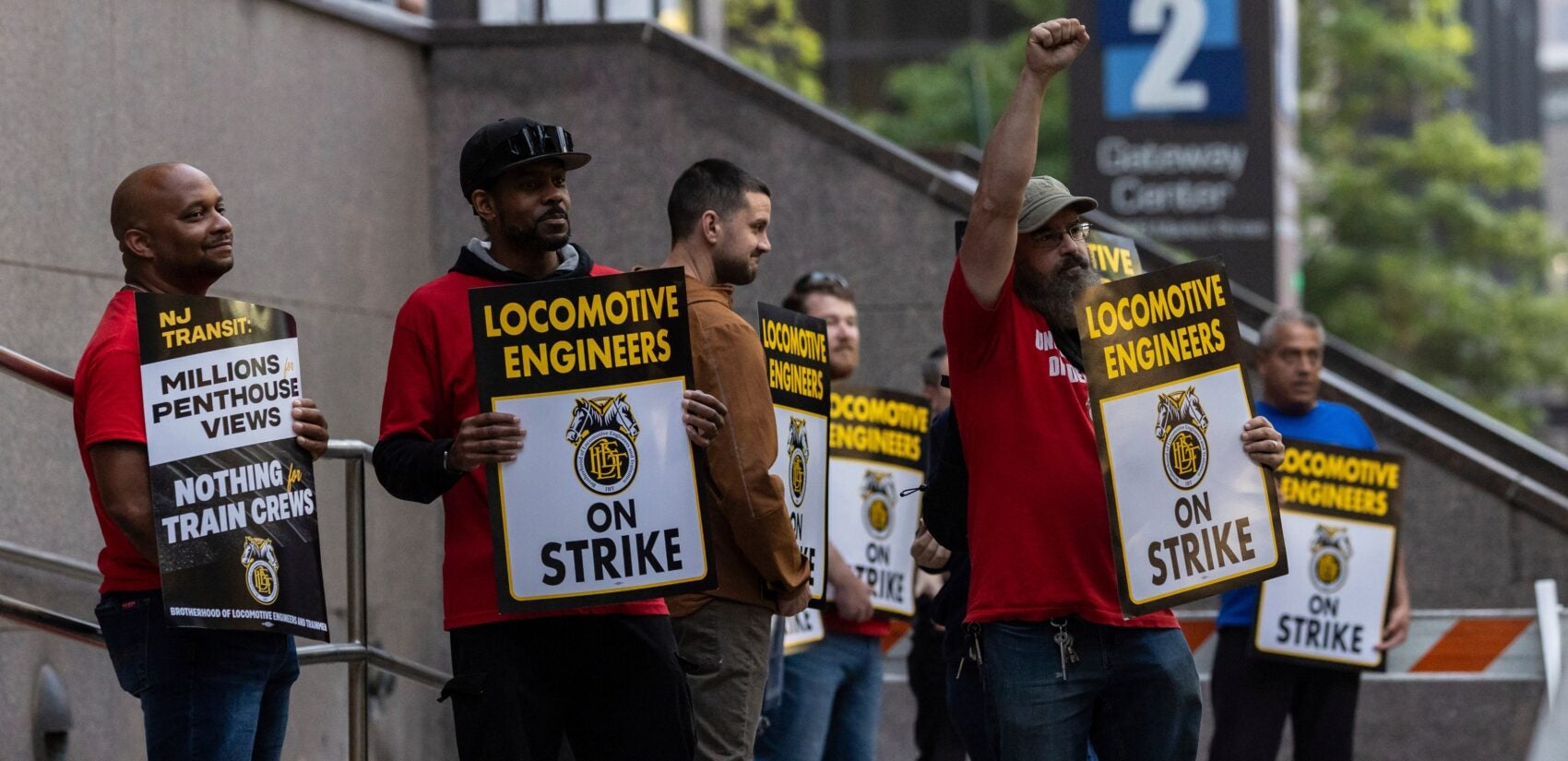
The engineers’ union has been working without a contract since 2019. Dr. Will Brucher, a labor historian in the Rutgers School of Management and Labor Relations, said it was a long ramp up to get to the strike, in part due to the Railway Labor Act, which he said stretches out the timeline for negotiations. In addition to mediation, the president and Congress can get involved if there is an impasse.
“Workers are already in a much weaker negotiating position in the Railway Labor Act than they are under the National Labor Relations Act,” he said.
Bucher recounted the 2022 railroad workers’ strike as an example of how Congress can get involved. President Joe Biden pushed for and signed legislation enforcing the agreement his administration brokered between workers and management to avert the strike.
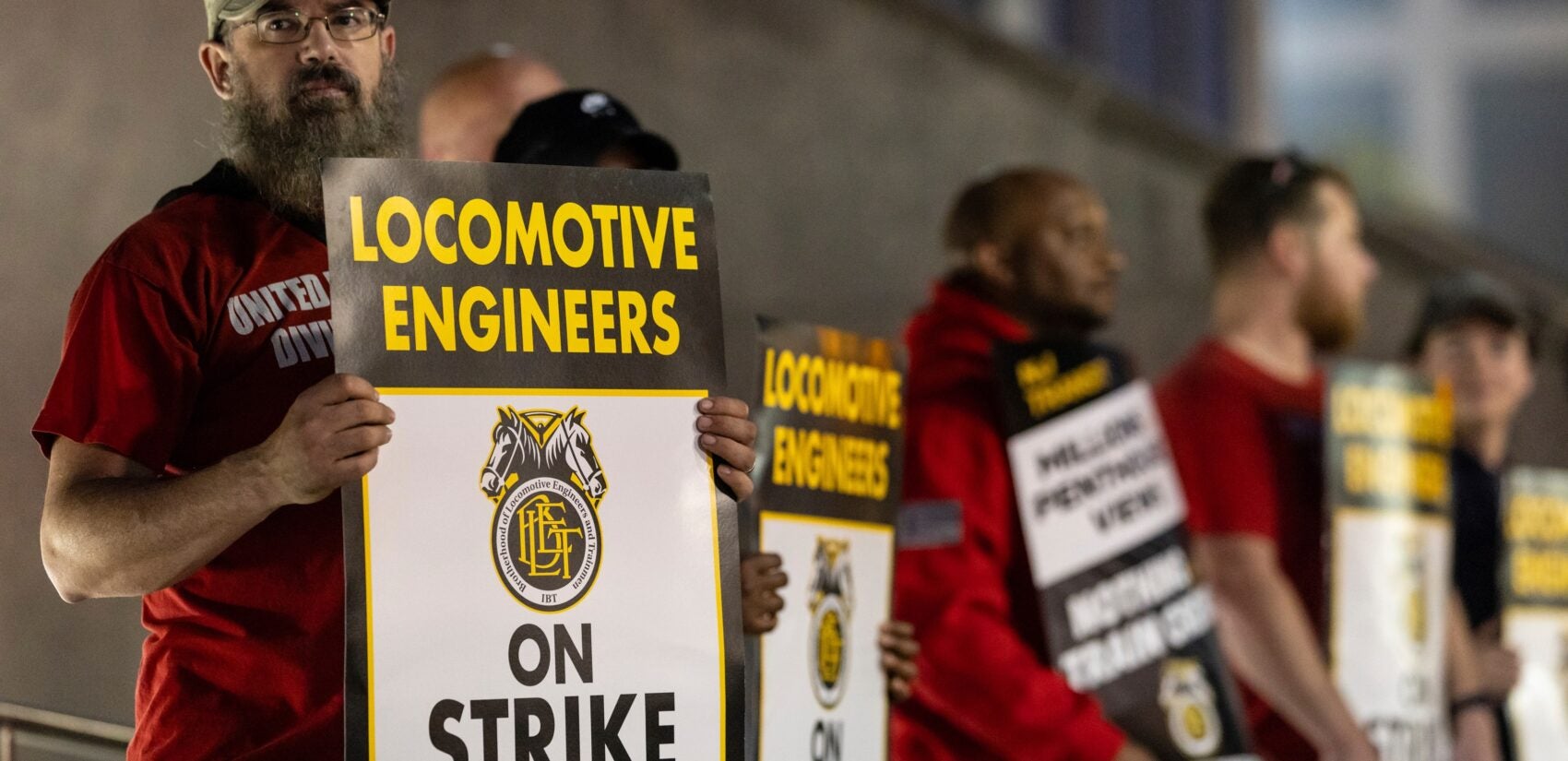
The contingency plan
NJ Transit’s strike contingency plan includes extra bus service originating from four temporary park and ride lots:
- Secaucus Junction, with service to Port Authority Bus Terminal, New York
- PNC Bank Arts Center in Holmdel, with service to Port Authority Bus Terminal, New York
- Woodbridge Center Mall, with service to the Harrison PATH Station
- Hamilton Rail Station, with service to the Newark Penn Station PATH Station
The agency announced that services from the park and ride lots won’t begin until Monday, but some travelers were not aware of the information.
The manager of the Dunkin Donuts shop at the Hamilton Train station, who declined to give his name, said many travelers showed up during the morning, some for their normal train and others for the bus service. He said they all seemed very unhappy to find out about the strike. Several NJ Transit workers at the station declined to comment.
The contingency plan also includes additional bus service on these New York commuter bus routes:
- Northeast Corridor: 108, 112, 115 and 129 bus routes
- North Jersey Coast Line: 116 and 133/135 bus routes
- Raritan Valley Line: 112 and 113 bus routes
- Morris & Essex Lines: 107 bus route
- Montclair-Boonton Line: 193 and 324 bus routes
- Main-Bergen County Lines: 145, 163, 164 and 190 bus routes
- Pascack Valley Line: 163, 164 and 165 bus routes
NJ Transit advised travelers to expect crowded conditions and longer travel times on buses and light rail because of the strike. Officials also stressed the contingency plan would only accommodate an extremely limited number of rail customers, so people should work from home if possible.
NJ Transit rail tickets and passes with an origin or destination of New York, Newark or Hoboken will be accepted for travel on buses that operate from the park & ride lots, as well as on NJ Transit buses and light rail lines.
The latest travel information is available on a special NJ Transit web page.
Here is what happened the last time there was an NJ Transit strike
Union engineers have been working without a contract since 2019. Brucher said this strike has parallels to the last one in 1983.
“It was conductors and not engineers, and it was a different union on strike,” he said. “They had literally just lost earnings going from the end of ‘82 to the beginning of ‘83 in one fell swoop.”
On Jan. 1, 1983, NJ Transit took over the rail operations of Conrail, a private corporation setup by Congress in 1976 to take over six Northeast bankrupt railroads. The state used the opportunity to negotiate new contracts with the United Transportation Union. Officials sought an average annual salary cut of $6,000 per worker. But the conductors said they were already making less from when the state assumed control over operations.
That strike, which lasted 34 days, resulted in workers getting a 17% pay increase, more than what transit officials and the federal government had offered through mediation. Bucher said that this was still a pay cut of at least $5,000 in 1983 money.
“They accepted the agreement with the realization that they’re not getting what they want, but they’re getting a little more than what they were being offered,” he said.
While conductors in the north division accepted the agreement, workers in the east division did not and threatened to strike. Ultimately, the state got an injunction to prevent another strike from happening, Blucher said.
What happens next?
Kolluri said negotiations will resume this weekend.
“Supplemental bus service cannot fully replace trains, but we are prepared to support our customers with highly visible ambassadors to help them navigate these interim measures,” he said.

WHYY is your source for fact-based, in-depth journalism and information. As a nonprofit organization, we rely on financial support from readers like you. Please give today.


